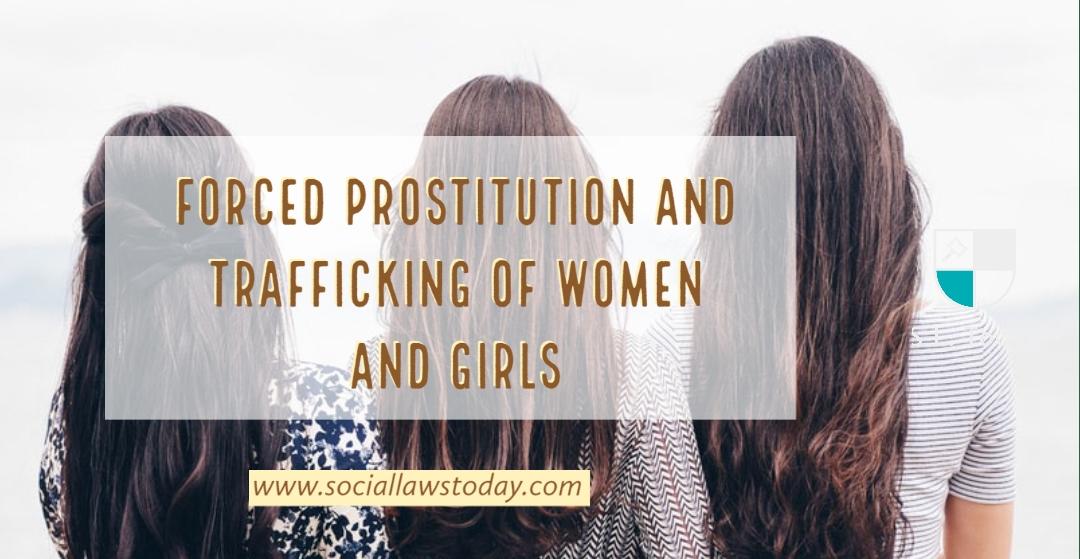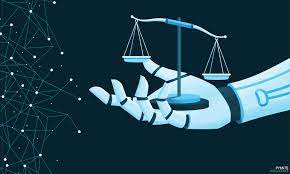FORCED PROSTITUTION : AUTHOR : G.R ADITHYA
In India, where the class stratum is more prevalent , has never been studied thoroughly with relevant caste role in forced prostitution. Over the last decade, the quantity of human trafficking and compelled prostitution has increased in a large number. While going through the reports thousands of scheduled caste women and girls are forced into prostitution each year. The link between caste and compelled prostitution is obvious within the Devadasi and Jagini system practiced in India, which is unfortunate. Human Rights Watch (HRW) estimates that up to 15,000 scheduled caste female children in India are taken from their families and raped and auctioned into prostitution per annum. Regrettably, today , sex-trafficking could be a high-tech, globalized, electronic market and predators are involved in the highest degree levels using the identical methods to manage prostituted women that batterer are against their victims. Victims of sex trafficking acquires adverse physical and psychological health conditions and social disadvantage. Thus, sex trafficking is a critical health issue with boarder social implications that acquire both medical and legal attention.
FORCED PROSTITUTION
The term Forced Prostitution is additionally called involuntary prostitution or just as prostitution or sexual slavery that takes place as a result of coercion by a third party. Forced prostitution refers to conditions of control over someone who is coerced by another to have interaction in sexual issues. It is actually a criminal offence against an individual due to the violation of the victims rights of movement through coercion and since of their commercial exploitation. Prostitution is one of the oldest profession all over the world. And it is also most hated profession. It is most hated profession but people who visit them actually enjoy it, but in society it pretend otherwise. However a new definition has been given for this term in the Government of India’s Prevention of Immoral Traffic Act-1987, which now means ‘Sexual exploitation orb abuse of persons for commercial purpose.’
Generally prostitutes can be classified mainly on the basis of their ‘modus operandi’ which is as follows:
- Brothel Prostitutes: In this type their operation is carried out in the brothel which is owned by an ex-prostitutes. The prostitutes work for a commission based on her sexual service.
- Call Girl Prostitutes : They generally operate independently from her place, She may be available directly or solicit customers through middlemen.
- Street Prostitutes: This type solicits customers on the streets and takes customer to a place of assignation.
- Other Types: Clandestine forms of prostitution are also found in bare, message parlours, amusement centers, dance clubs etc.
Some of the related to prostitution in india are the following:
- Immoral Traffic (Prevention) Act-1956
- Procuration of Minor Girls(Sec 366A IPC)
- Selling of Girls for Prostitution (Sec 372 IPC)
- Buying of girls for Prostitution (Sec 373 IPC)
- Immoral Trafficking (Prevention) Act 1956
- Child Marriage Restraint Act 1929
HUMAN TRAFFICKING
All over the world Human trafficking has received an increasing global attention over the past decade. Initially, trafficking of women and gilrs for forced sex work , and to a lesser extent, domestic servitude, were the sole focus. Human trafficking is one of the modern day form of slavery that involves the illegal trade of human beings for the purpose of some form of forced exploitation. Human trafficking is defined by United Nations Office On Drugs and Crime (UNODC) as a form of recruiting, transporting, transferring ,harbouring, or receiving a person by means of threat or use of some force or other forms of coercion, abduction, fraud or deception. There are an approximately 800,000 people trafficked across international borders annually and out of these 80% are women or girls and 50%are minors. Although the degree of trafficking among countries and continents is variable, it is clear that global trafficking has become a growing problem.
Any form of contemporary female slavery is prohibited by Article 4 of the Universal Declaration of Human Rights, which is says that no one shall be held in slavery and slave trade shall be prohibited in all their forms. And also Article 4(2) of the International Covenant on Civil and Political Rights declares the right to be free from slavery under Article 8 to be a non- derogable right.
Most common purposes for human trafficking are sexual exploitation and forced labour. Victims of sex trafficking are forced into one or more forms of sexual exploitation. It is very important to note that the sex trafficking and prostitution is simply one type of work performed by victims of sex trafficking. Sex trafficking is an umbrella term that may include commercial sex work such as prostitution, but also pornography , exotic dancing, stripping , live sex shows , mail- order brides, military prostitution , and sexual tourism.
TRAFFICKING INTO PROSTITUTION
The inhumane buying and selling of women and girls into prostitution, their complete subordination by the perpetrators, and the subsequent physical and mental violence to which they are subjected constitute slavery or at the very least, slavery-like practices. Slavery actually occurs when one human being effectively owns another so the former person can exploit the latter with impunity. The buying and selling of women and girls into brothels in India, and their forced confinement under inhuman working conditions, characterized by indiscriminate sexual exploitation by the traffickers, brothel owners, police and pimps has been reported by Human Rights Watch and other non-governmental organizations. However contemporary forms of female slavery do not exist within a neat international legal framework, therefore it is possible that these conditions could satisfy the internationally agreed-upon definition of slavery or slavery-like practices.
Yet, many myths and misinformation are still being spread about what human trafficking is and isn’t. Sex trafficking can include prostitution, but not all prostitution is necessary sex trafficking. Two main factors differentiate the above two. Firstly trafficking must involve a third party-beneficiary, meaning some other person besides or the person receiving the sexual act, must be involved. Secondly. Human sex trafficking when involving adults over the age of 18 is achieved through force, fraud or coercion. Importantly if the person prostituting him or himself isn’t 18 years old, then whenever a third party beneficiary is involved, the prostitution constitutes sex trafficking.
DOES LEGALIZED PROSTITUTION INCREASE HUMAN TRAFFICKING
Most victims of International Human Trafficking are women and girls. The vast majority end up being sexually exploited through prostitution. Many authors therefore believe that trafficking is caused by prostitution and combating prostitution with the force of the law would reduce trafficking. The idea that combating human trafficking requires combating prostitution is, in fact, anything but new. Some disagrees and argue that that legalization of prostitution will improve working and safety conditions for sex workers, allowing sex businesses to recruit among domestic women who choose prostitution as their free choice of occupation. This in turn makes resorting to trafficked women less attractive. While those who call for combatting prostitution with the force of the law typically subscribe to the belief that prostitution is almost always forced and rarely voluntary , the view that the legalization of prostitution may reduce trafficking is typically held by those who believe that the choice to sell one’s sexual services for money need not always be forced, but can be a voluntary occupational choice. We can argue that theoretically the legalization of prostitution has two contradictory effects on the incidence of trafficking a substitution effect away from trafficking and a scale effect increasing trafficking.
CONCLUSION
Trafficked women and girls encounter high rates of physical and sexual violence, including homicide and torture, psychological abuse, horrific work and living conditions, and extreme deprivation while in transit. Serious mental health problems result from trafficking, including anxiety , depression, self-injurious behaviour, suicidal ideation and suicide, drug and alcohol addiction, post- traumatic stress disorder (PTSD), dissociative disorders and complex PTSTD. Physical symptoms among trafficking victims include neurological issues, chronic pain, sexually transmitted diseases (including HIV), uro-genital problems, dental problems, fractures and traumatic brain injuries. In order to effectively combat trafficking, psychologists and policy makers must collaborate to better understand the deleterious risks of trafficking exploitation, and prevention and intervention strategies for vulnerable populations.
Prostitution will be a euphemism for human trafficking. This can be why we don’t consult with people prostituting themselves as prostitutes. The label implies a choice when the truth is that several people don’t seem to be prostituting themselves by choice. The word ‘prostitute’ evokes a specific negative connotation and victims of human trafficking deserve better.
REFERENCES
- Adelson, W.J. (2005) .Child Prostitutes or Victims of trafficking, University of St. Thomas Law Journal
- Bhattacharjea. R. (2003).Trafficking in south asia in emerging contexts of Globalization
- Hoque,N.M, (2010) Female child trafficking from Bangladesh: A new form of slavery
- https://www.bloomsburyprofessional.com
- https://www.traffickingmatters.com




Leave feedback about this